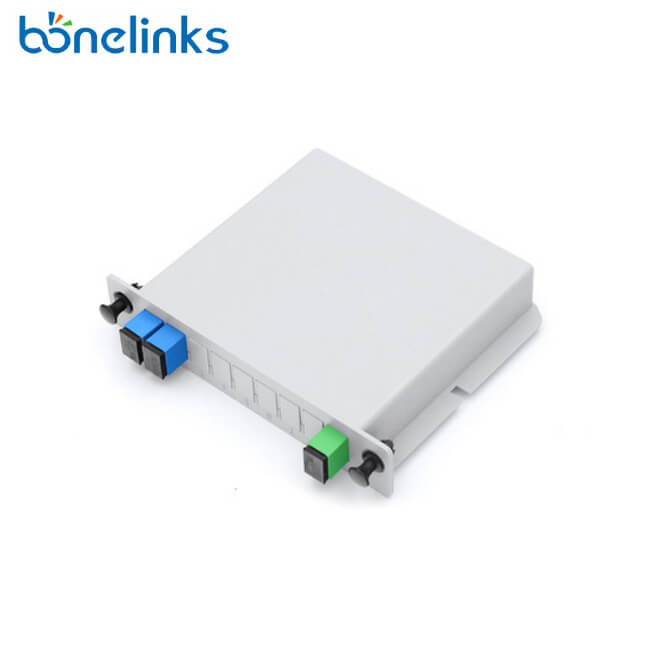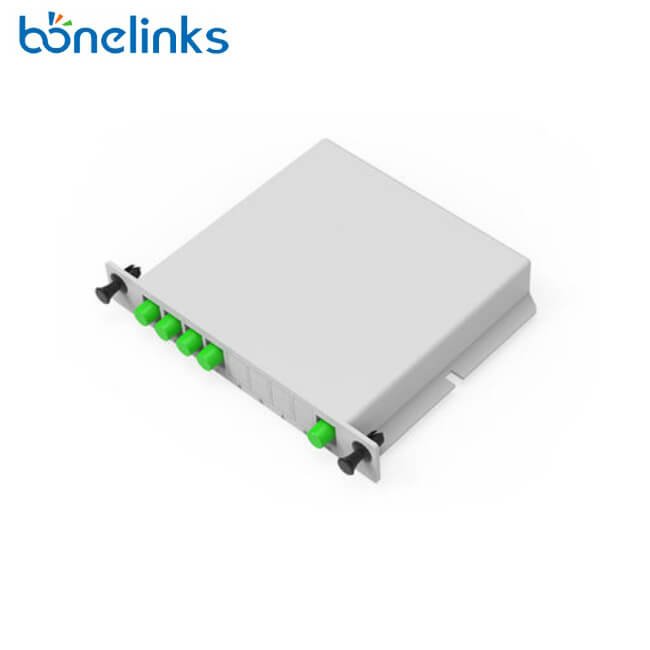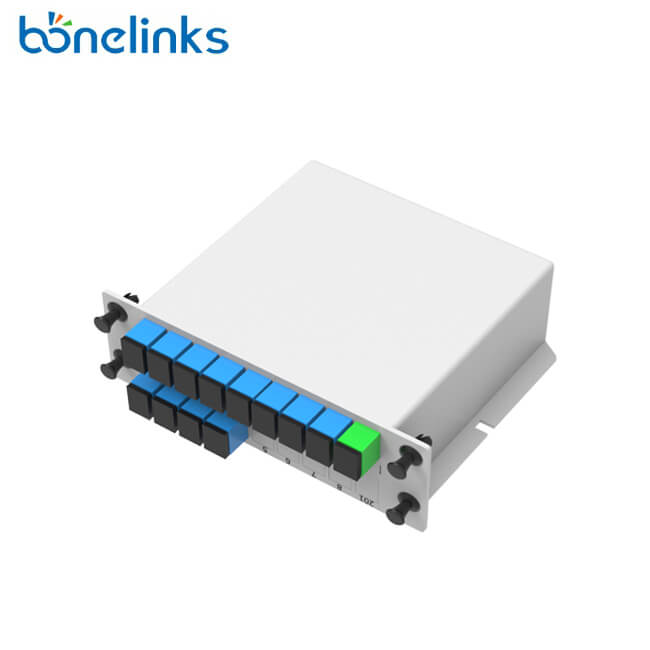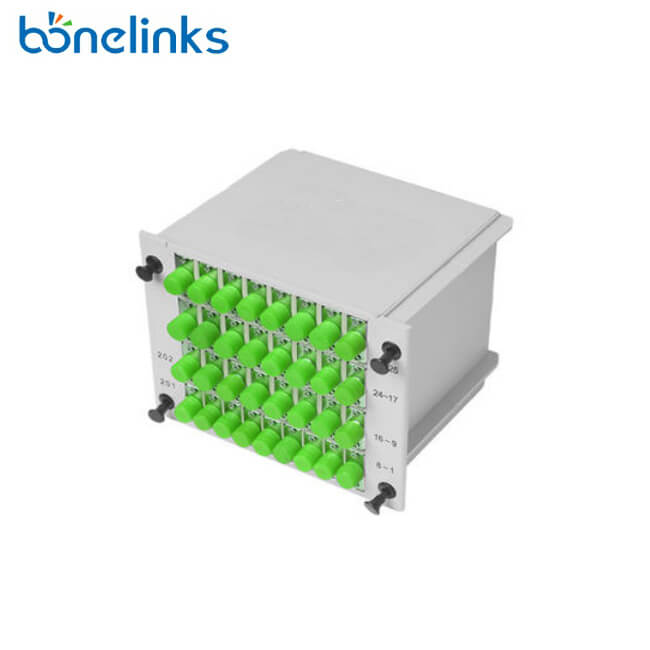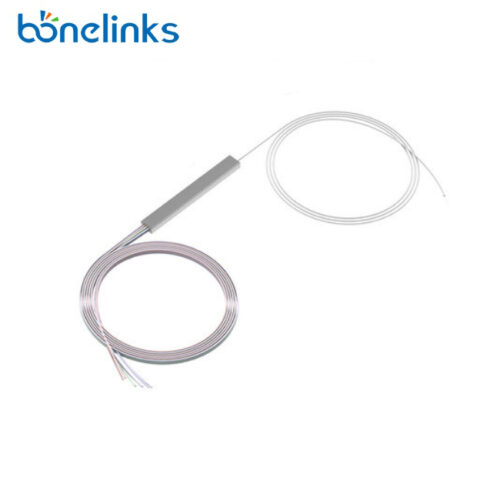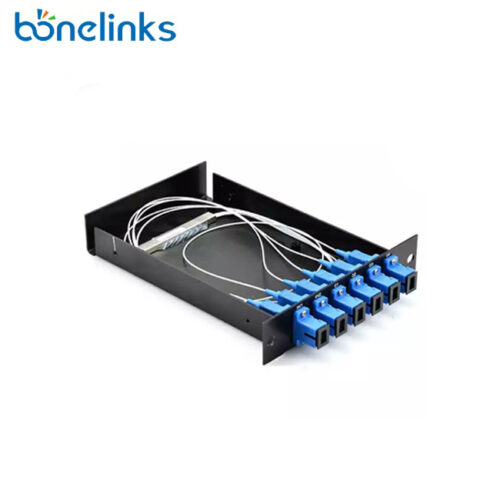Plug-In PLC splitter is a reliable, cost-effective, and easy-to-install solution for fiber optic signal distribution in PON networks. With its superior performance and versatility, it is a popular choice among network operators and service providers.
Bonelinks offers Plug-In PLC splitters in 1×4, 1×8, 1×16, and 1×32 configurations. For example, a 1×4 splitter has one input and four outputs. These splitters have mini taps with pre-terminated connectors that interact with the outside world through fiber optic adapters.
To ensure top-quality products, Bonelinks tests all of its Plug-In PLC splitters before production. The built-in steel tube splitter is checked for through-light, end-face, and split ratio after connectors are installed. Each port is tested for attenuation values and all test reports are included with each product as a guarantee of its quality and performance.
Features
- Easy to install: Plug-in PLC splitters are designed to be easily installed into an ONU or OLT, simplifying network deployment and maintenance.
- Compact design: Plug-in PLC splitters are small in size, making them easy to install and manage in optical networks.
- High reliability: Plug-in PLC splitters are made from high-quality materials and are built to strict standards, ensuring their reliability and longevity.
- Low insertion loss: PLC splitters have low insertion loss, meaning that they do not significantly reduce the strength of the optical signal.
- Wavelength independence: PLC splitters are wavelength independent, meaning they can divide the optical signal regardless of its wavelength.
Application
- Optical Fiber Communication Systems: Plug-in PLC splitters are used in optical communication systems such as Passive Optical Networks (PONs), where the signal from a single optical source needs to be divided into multiple branches to reach multiple end-users.
- Data Centers: Plug-in PLC splitters are used in data centers to distribute high-speed optical signals to multiple servers.
- CATV Networks: Plug-in PLC splitters are used in Cable Television (CATV) networks to divide the signal received from a headend into multiple outputs to be distributed to multiple subscribers.
- Optical Amplifier Systems: Plug-in PLC splitters are used in optical amplifier systems to distribute the optical signal for amplification.
- Optical Measurement Systems: Plug-in PLC splitters are used in optical measurement systems such as optical power meters, optical spectrum analyzers, etc.

